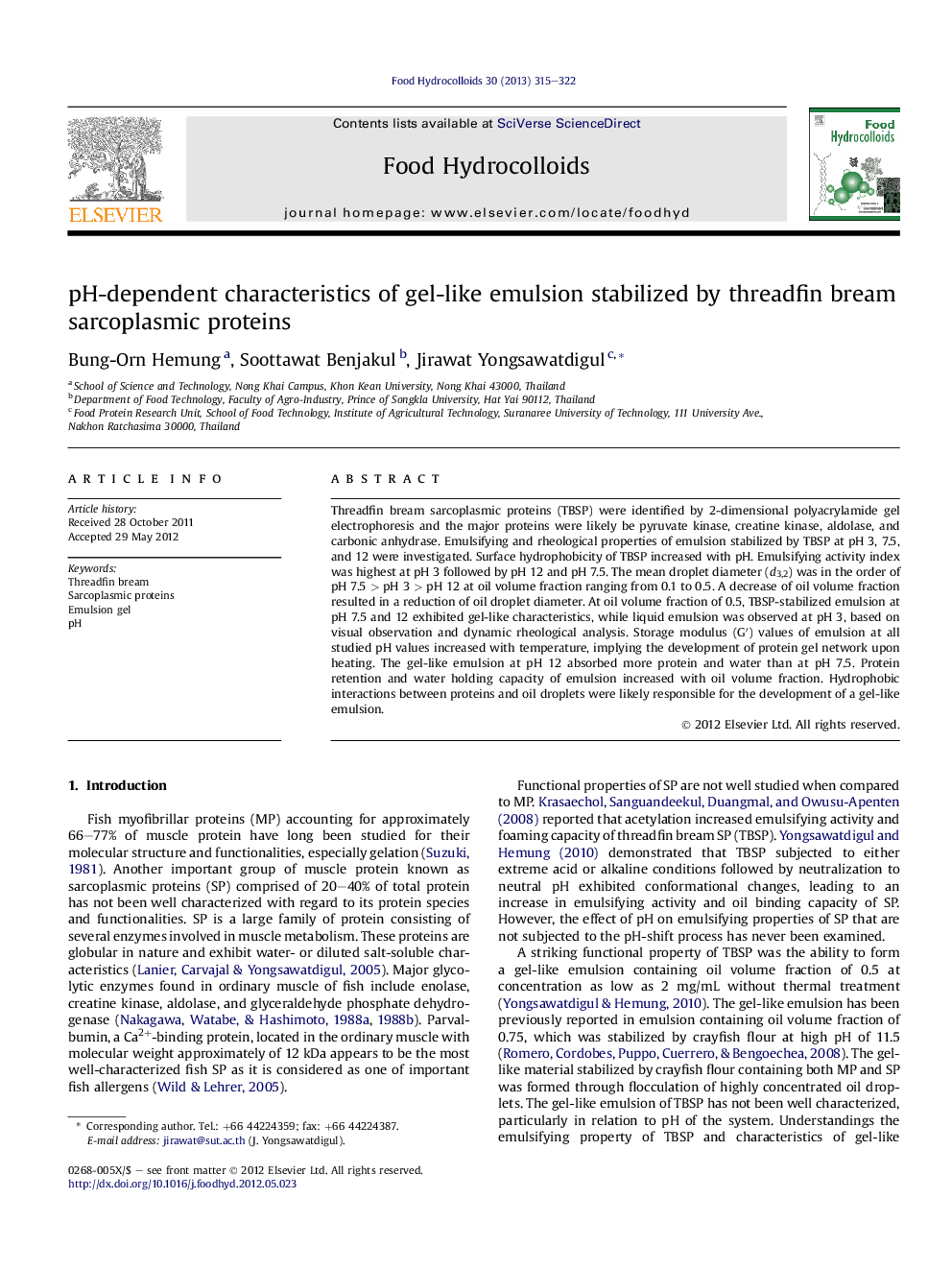| Article ID | Journal | Published Year | Pages | File Type |
|---|---|---|---|---|
| 604755 | Food Hydrocolloids | 2013 | 8 Pages |
Threadfin bream sarcoplasmic proteins (TBSP) were identified by 2-dimensional polyacrylamide gel electrophoresis and the major proteins were likely be pyruvate kinase, creatine kinase, aldolase, and carbonic anhydrase. Emulsifying and rheological properties of emulsion stabilized by TBSP at pH 3, 7.5, and 12 were investigated. Surface hydrophobicity of TBSP increased with pH. Emulsifying activity index was highest at pH 3 followed by pH 12 and pH 7.5. The mean droplet diameter (d3,2) was in the order of pH 7.5 > pH 3 > pH 12 at oil volume fraction ranging from 0.1 to 0.5. A decrease of oil volume fraction resulted in a reduction of oil droplet diameter. At oil volume fraction of 0.5, TBSP-stabilized emulsion at pH 7.5 and 12 exhibited gel-like characteristics, while liquid emulsion was observed at pH 3, based on visual observation and dynamic rheological analysis. Storage modulus (G′) values of emulsion at all studied pH values increased with temperature, implying the development of protein gel network upon heating. The gel-like emulsion at pH 12 absorbed more protein and water than at pH 7.5. Protein retention and water holding capacity of emulsion increased with oil volume fraction. Hydrophobic interactions between proteins and oil droplets were likely responsible for the development of a gel-like emulsion.
Graphical abstractFigure optionsDownload full-size imageDownload as PowerPoint slideHighlights► Fish sarcoplasmic proteins can form liquid emulsion at pH 3. ► The gel-like emulsion is obtained at pH 7.5 and 12. ► Surface hydrophobicity of sarcoplasmic proteins increases with pH of the emulsion. ► The mean droplet size of emulsion varies with pH and oil volume fraction. ► Hydrophobic interactions likely contribute to the gel-like emulsion at pH 7.5 and 12.
